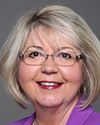First of all, I'd like to say how pleased I am with the work you've all been doing. All of you need to be congratulated for the methods you're using and the amount of energy you've dedicated to this. I think it's very important, and you've been truly quite remarkable.
I have two questions. I know the work that Citizenship and Immigration had been doing is tremendously valuable to round everything out, but unfortunately I don't have a question for you.
My question is for the other three, Madam Chair.
My first question is about the graduating age from high school to university. In the province of Ontario, graduates are generally 17 years of age, and we're asking people to make life choices about what education stream they're going to pursue. I'm wondering if any studies would make any determination about what the optimal age might be for females versus males to ask that question.
My second question is, how do we pique the interest of folks in the guidance counselling streams and the staff and teachers within high schools in allowing these young women to grow differently?
For example, we have a school in my riding that has what they call a SWAT club, science women are tops. That's their club and it's very well attended. They have a robotics group and all those sorts of things. There's another group, a national group called FIRST Robotics. They're engaging with high schools, trying to get them to put robotics teams together. I know the federal government has been funding them. They just had an event at Durham College, University of Ontario Institute of Technology a week ago, where they were choosing the finalists who were going to go to the United States for the final competition.
There are some great things out there. I'd like to see how we incorporate them all, how we bring them together, looking at that age, looking at the teachers, and looking at what else is out there. How do we bring it together?
Those are my questions, Madam Chair. Three witnesses can answer.




